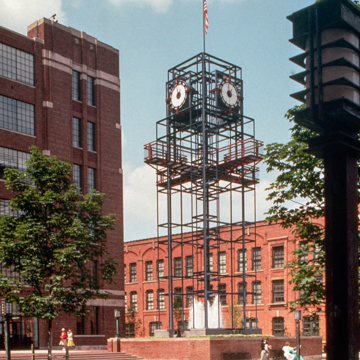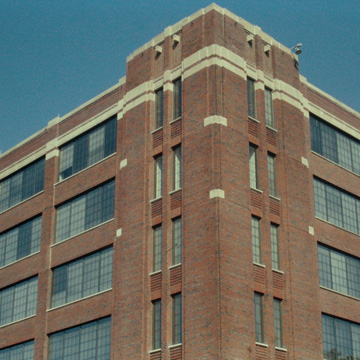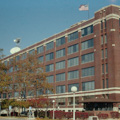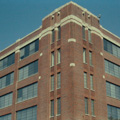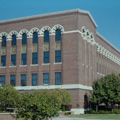You are here
Stroh River Place (Parke-Davis Pharmaceutical Company)
Located on 14.5 acres on the east riverfront, River Place is the rehabilitated complex of the late-nineteenth- and early-twentieth-century industrial structures that comprised the Parke-Davis Pharmaceutical Company. Parke-Davis played a key role in early drug research and production. The twenty-one buildings within the complex date from 1891 to 1948. Before the automobile industry dominated Detroit's economic life in the twentieth century, Parke-Davis was a major employer in the city. Warner Lambert acquired the company in 1970, retaining the Parke-Davis name but sold this plant in 1982, one year after moving out. Other industries on the east riverfront included the Peninsula Car Works, the Michigan Stove Company, and American Eagle Tobacco Company.
Stroh Properties, Inc., later River Place Properties, purchased the site in 1981 with bold plans to invest private and public funds to rehabilitate to the master plans of James Stuart Polshek the extensive space within the industrial buildings for mixed use.
Most of the office, laboratory, and drug production buildings are built of brick with light stone decoration. Facing the river, the Administration Building (1927, Smith, Hinchman and Grylls) at 100 River Place is the most architecturally distinctive. Stroh Brewery initially moved its corporate headquarters to the administration building, but now it serves as corporate headquarters for the Talon Group. Detroit Research (Building 55/Parke-Davis Research Laboratory, 1902, Donaldson and Meier), also located on the river, was the first industrial laboratory in the United States built for commercial pharmaceutical research. Together with Building 54, a laboratory designed by Albert Kahn in 1942, Building 55 is a National Historic Landmark and the former Omni Detroit River Place, a 108-room luxury hotel at 1000 River Place rehabilitated to plans by Tomlinson and Harburn of Flint. The Drug Productions Building (1921, 1926; 300 River Place) by Kahn has been rehabilitated into office and retail space, complete with atriums and modern amenities.
The earlier laboratories, warehouses, and production facilities (1908; 400 and 500 River Place) were rehabilitated to the plans of Louis Redstone for use as 247 apartment units. Six Hundred River Place is a new parking garage designed to replicate the appearance of the 1910s and 1920s buildings in the complex. On its roof are fifty-four town houses planned by Redstone. The Personnel Building (1920–1921) will become the River Place Athletic and Croquet Club (1400 River Place) as Tomlinson and Harburn's plans for rehabilitation and new construction are completed. Two Hundred River Place is loft condominiums. As individual phases of the project were committed to, River Place Properties, Inc., took on partners.
Writing Credits
If SAH Archipedia has been useful to you, please consider supporting it.
SAH Archipedia tells the story of the United States through its buildings, landscapes, and cities. This freely available resource empowers the public with authoritative knowledge that deepens their understanding and appreciation of the built environment. But the Society of Architectural Historians, which created SAH Archipedia with University of Virginia Press, needs your support to maintain the high-caliber research, writing, photography, cartography, editing, design, and programming that make SAH Archipedia a trusted online resource available to all who value the history of place, heritage tourism, and learning.
















